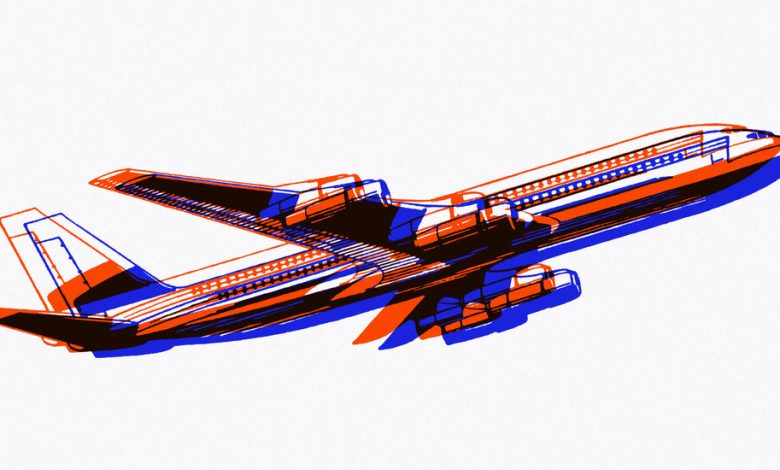The Scariest Part About the Boeing 737 Max 9 Blowout

You should worry that a crying baby will be in the seat next to you. You should worry that snow in Chicago will snarl air traffic. But you should never, ever have to worry that a plug in the side of your plane — a hidden weak spot — will suddenly blow out at 16,000 feet. That is what happened to Alaska Airlines Flight 1282 shortly after takeoff from Portland, Ore., on Friday.
No one was seriously injured, but air travelers are frightened, and rightly so, partly because of the unnerving sense of hidden danger. The wall next to seat 26A on the 2-month-old Boeing 737 Max 9 looked like any other part of the wall as the plane ascended. What passengers couldn’t see was that behind the plastic shell and the insulation was a cutout in the fuselage. The cutout was where an emergency exit would go in a different configuration of the plane. That unseen cutout was filled with a plug — a kind of door that’s ordinarily bolted shut except during maintenance. Something was wrong with the plug, though, and suddenly it blew out, landing three miles below in the backyard of a science teacher.
By sheer luck, the two seats next to where the hole opened were among only seven on the plane that happened to be empty. Also by sheer luck, the blowout happened before the jet had reached cruising altitude, where the sudden loss of cabin pressure would have been far more severe. Passengers might have been sucked out of the hole or, if unmasked, died from a lack of oxygen.
I asked experts why the blowout occurred, who’s to blame and what needs to happen next. Air travel remains remarkably safe. But I didn’t come away with any strong reassurance that something like this won’t happen again.
It seems unlikely that the accident was caused by a design flaw, making it different from the crashes of Boeing 737 Max 8 jets in 2018 and 2019 that killed 346 people, both within minutes of takeoff. Other Max 9 jets haven’t had any problems with their plugs blowing out in flight.
That’s good news in one way, but bad in another, because it makes it more likely that the problem occurred in manufacturing. A design flaw can be fixed once and for all, but sloppiness in manufacturing — if that is indeed the problem here — tends to be chronic and harder to put right. Come to think of it, one could well argue that any design that’s highly susceptible to being manufactured incorrectly is by definition flawed.
We are having trouble retrieving the article content.
Please enable JavaScript in your browser settings.
Thank you for your patience while we verify access. If you are in Reader mode please exit and log into your Times account, or subscribe for all of The Times.
Thank you for your patience while we verify access.
Already a subscriber? Log in.
Want all of The Times? Subscribe.
